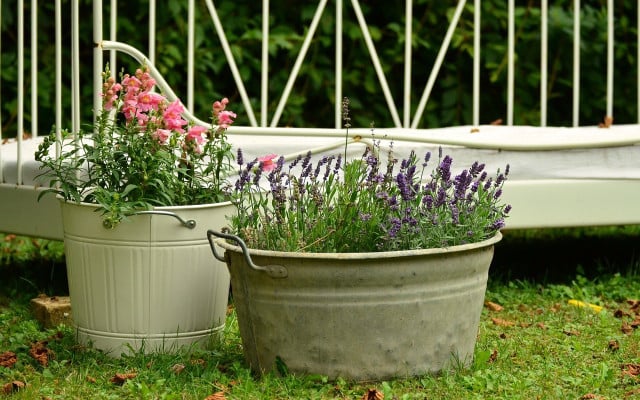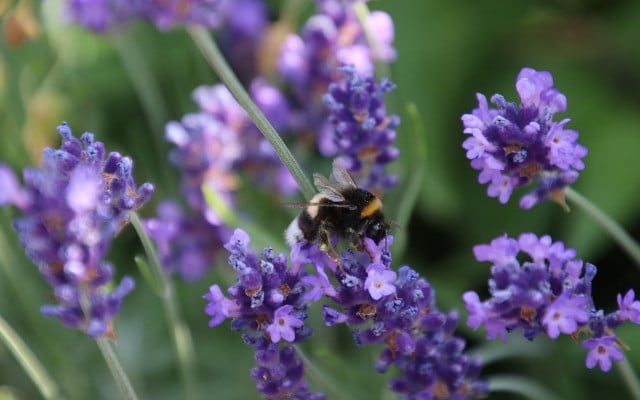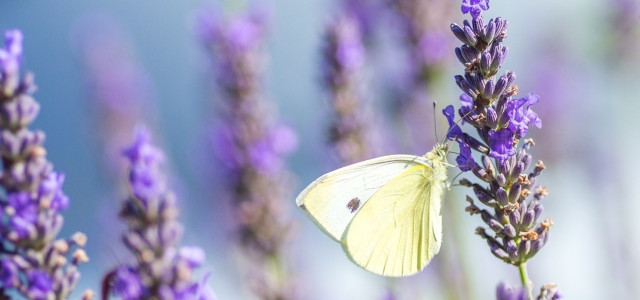It does not require much time to plant and care for lavender. Find out what to pay attention to when planting and caring for lavender.
Lavender originally comes from the Mediterranean basin, still cultivated to this day. The plant is particularly sought after by the perfume industry for its aromatic scent.
Lavender smells good, looks good, and has many useful, practical applications. Its fragrance attracts bees and butterflies, which come looking for nectar and pollen, but it keeps away mosquitoes, aphids, and moths. Natural healers often use lavender oil for its antiseptic and anti-inflammatory properties, and when used as aromatherapy, lavender is thought to lower stress and anxiety while improving mood.
With the proper care and pruning, your planted lavender can grow to a height of 30 to 60 centimeters and can live up to 30 years.
How to Plant Lavender

- Habitat and soil: Lavender plant care starts by choosing the right spot for your plant. It should be sunny, sheltered from the wind, and have slightly sandy and nutrient-poor soil. Avoid areas with high amounts of clay in the soil. As lavender does not tolerate colder temperatures well, a place near a house wall is a good idea, since it will give off heat in winter.
- Tub or garden: Lavender can be planted in a tub or directly in the garden.
- Planting seeds: Seeds should be planted in spring. Start them in a tray and allow them to germinate indoors. In May, when the last frost is over, you can start planting the seedlings in the garden. If you prefer not to sow the seeds yourself, you can also buy young lavender plants at your local nursery.
- Distance: When planting lavender, leave 12-15 inches of space between each plant.
- Frost: Not all varieties of lavender are hardy enough to survive the frost. In general, French varieties will not survive the cold, but English lavender is much tougher. When buying lavender seeds or seedlings, take care to plant the right lavender types. In the winter, cover the roots with mulch or fir branches.
How to Care For Your Lavender



If you find yourself in total lack of a green thumb, you are in luck: lavender plant care is super easy.
- Fertilizer: It is not necessary to use fertilizer when planting lavender. If you decide that your plant has earned some special care, be sure to use only low nitrogen fertilizer.
- Watering: Being a drought-resistant plant, lavender prefers less moisture. It does not require daily watering once it is about three months old. Most important for lavender plant care is making sure that there is proper drainage around your lavender: the accumulation of stagnant water will kill your plant.
- Pests: Thanks to its aromatic scent, aphids, and other pests stay away from lavender plants on their own.
- Diseases: Lavender is generally not very susceptible to disease. Infection only becomes problematic when water accumulates. Poor drainage will cause the roots of the plant to start to rot, making them susceptible to fungi. A fungal infestation shows itself by brown or black spots on the leaves.
- Pruning: Proper pruning is one of the most important parts of proper lavender plant care. In the summer, clip fading flowers to encourage new growth. Once your lavender plant is established, you need to keep it compact and prevent the stems from becoming too woody and splitting. Cut back all the stems by about a third after the plant has finished blooming for the season.
Tip: If you see that your lavender flowers have begun to droop, don’t immediately rush to give them water. This is the plant’s normal reaction to heat. To avoid overwhelming the plant with too much moisture, check the soil first to see if it is too dry before deciding whether or not to water.
** Links to retailers marked with ** or underlined orange are partially partner links: If you buy here, you actively support Utopia.org, because we will receive a small part of the sales proceeds. More info.Do you like this post?






